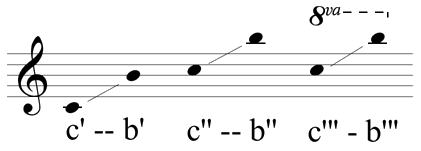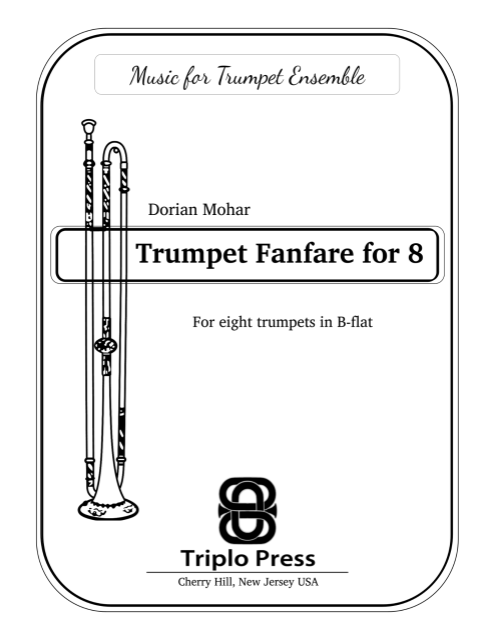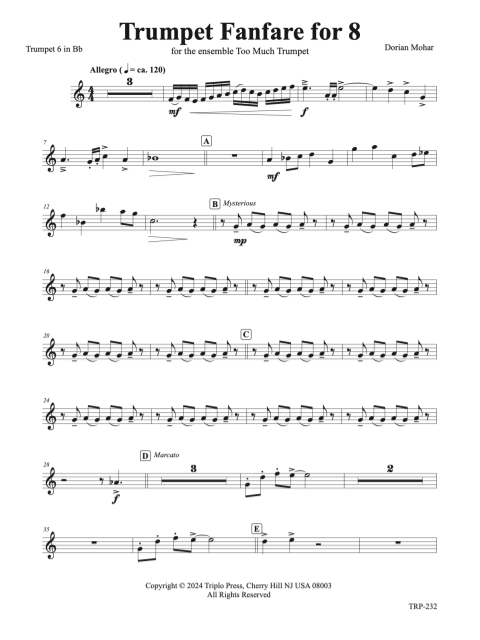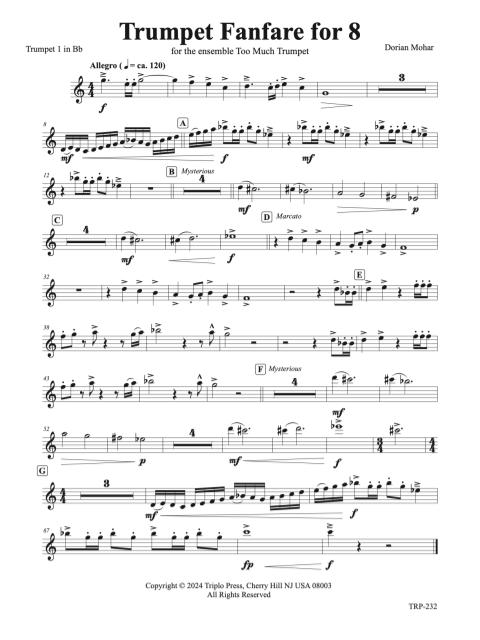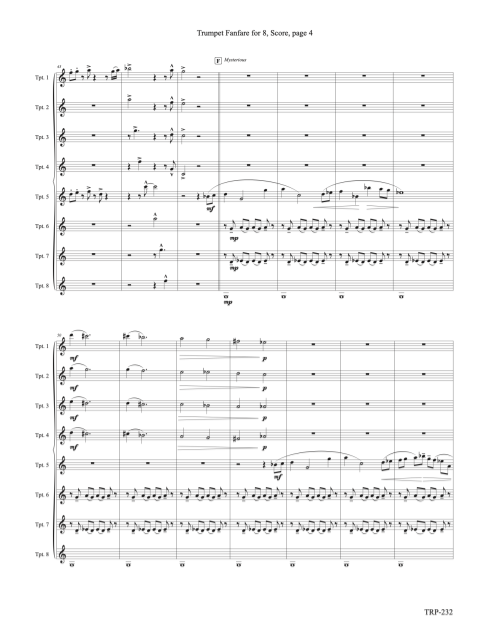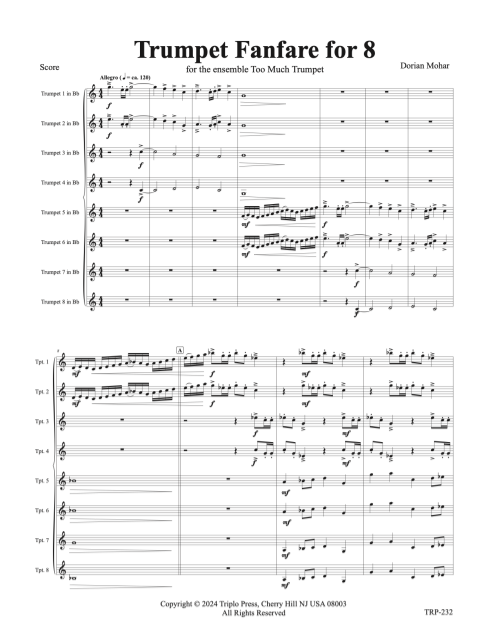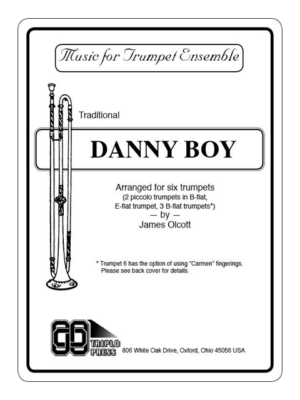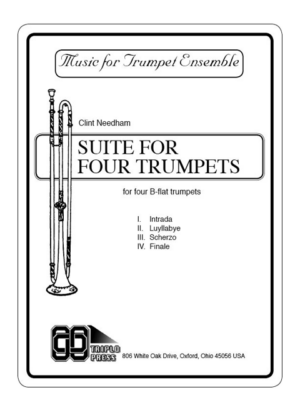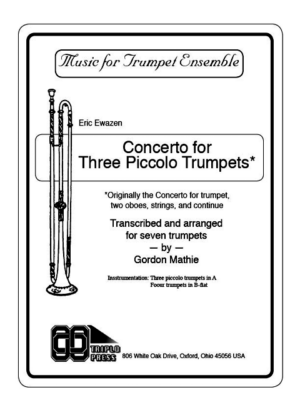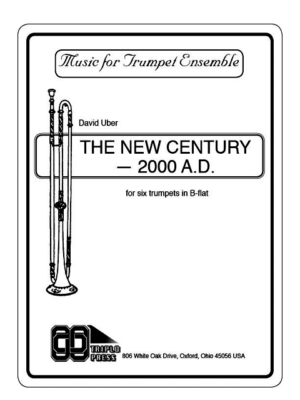0
Cart ▾
There are no items in your cart.
Composer: Mohar, Dorian A
Number of Trumpets: 8
Key: Bb Major concert
Duration: 2 minutes and 18 seconds
Difficulty: 6
Price range: $15.30 through $18.00
Trumpet Fanfare for 8
 A 20th century fanfare beginning with two 4-part choirs, introducing a catchy phrase with a familiar response. As the piece progresses, it transitions into a darker, more mysterious mood, with rich lower parts supporting an exposed, beautiful melody. A cascading line drives the music back into a fanfare-like development, incorporating additional cascading figures. When the dark, mysterious atmosphere returns, it's important not to overplay the upper choir (which reaches a concert D-flat) to maintain the piece's character. This section closes with more cascading lines and a return to the fanfare. The piece concludes with four 2-part choirs, bringing all the thematic elements together for a powerful finale that’s sure to receive an enthusiastic response from any audience!
A 20th century fanfare beginning with two 4-part choirs, introducing a catchy phrase with a familiar response. As the piece progresses, it transitions into a darker, more mysterious mood, with rich lower parts supporting an exposed, beautiful melody. A cascading line drives the music back into a fanfare-like development, incorporating additional cascading figures. When the dark, mysterious atmosphere returns, it's important not to overplay the upper choir (which reaches a concert D-flat) to maintain the piece's character. This section closes with more cascading lines and a return to the fanfare. The piece concludes with four 2-part choirs, bringing all the thematic elements together for a powerful finale that’s sure to receive an enthusiastic response from any audience!
Audio Sample
PDF version: $15.30
Printed version: $18.00
